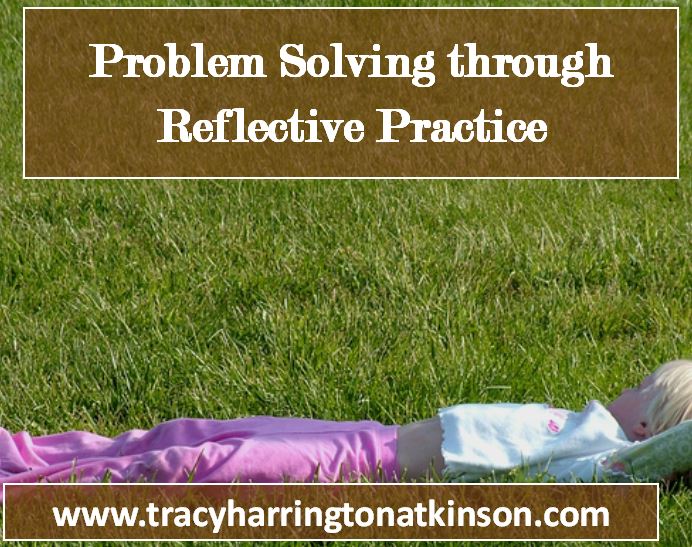 Reflective practice allows educators to identify areas of needs and while developing strategies built upon documented knowledge and information. “It is a way of thinking that fosters personal learning, behavioral change, and improved performance” (Ostermann & Kottkamp, 2004, p. 1) which is completed through a systematic approach of learning and changing. It is a practice which promotes questioning, analyzing existing behaviors and theories, encourages learning while also expressing the need for individuals and organizations to ponder. Such pondering moments allow progress to incur beyond a simple trial and error method (York-Barr et al., 2005).
Reflective practice allows educators to identify areas of needs and while developing strategies built upon documented knowledge and information. “It is a way of thinking that fosters personal learning, behavioral change, and improved performance” (Ostermann & Kottkamp, 2004, p. 1) which is completed through a systematic approach of learning and changing. It is a practice which promotes questioning, analyzing existing behaviors and theories, encourages learning while also expressing the need for individuals and organizations to ponder. Such pondering moments allow progress to incur beyond a simple trial and error method (York-Barr et al., 2005).
Reflective practice progresses through several steps. The practitioner first identifies a problem followed by the observation and analysis stage. Ostermann & Kottkamp (2004) identify this stage as “the most critical and complex of the four” (p. 28) stages. This stage entails the necessity of not only gathering information about the problem without tainting it with personal judgment but also analyzing the dilemma as it is compared from the current situation to the desired goal. The third stage, abstract re-conceptualization requires the practitioner to investigate new solutions and resources which address the root of the dilemma. Lastly, experimentation enters as the new strategies are utilized in changing behaviors. York-Barr et al. (2005) suggests that these steps are not linear, nor are they circular. Each step is interconnected

Using a learning journal aids in the learning process. Click on image.
with the others.
This practice can be utilized through recording each step and later reviewing what was learned. It allows educators to provide the example for the students in a continuous learning environment of progression as they develop skills to be more proficient at teaching and more skilled at learning. It is simply the experiential model by which educators learn most effectively.
These are some of my favorite sources for a reflective practice and problem solving using reflective practice.
Osterman, K. & Kottkamp, R. (2004). Reflective practice for educators: Professional development to improve student learning. Thousand Oaks, CA: Sage.
York-Barr, J., Sommers, W., Ghere, G. & Monthie, J. (2005). Reflective practice to improve schools: An action guide for educators. Thousand Oaks, CA: Sage.
By Tracy Harrington-Atkinson
Tracy Harrington-Atkinson, mother of six, lives in the Midwest with her husband. She is a teacher, having taught elementary school to higher education, holding degrees in elementary education, a master’s in higher education and continued on to a PhD in curriculum design. She has published several titles, including Calais: The Annals of the Hidden, Lemosa: The Annals of the Hidden, Book Two, Rachel’s 8 and Securing Your Tent. She is currently working on a non-fiction text exploring the attributes of self-directed learners: The Five Characteristics of Self-directed Learners.
Subscribe to our YouTube Channel by clicking here.



Comments are closed